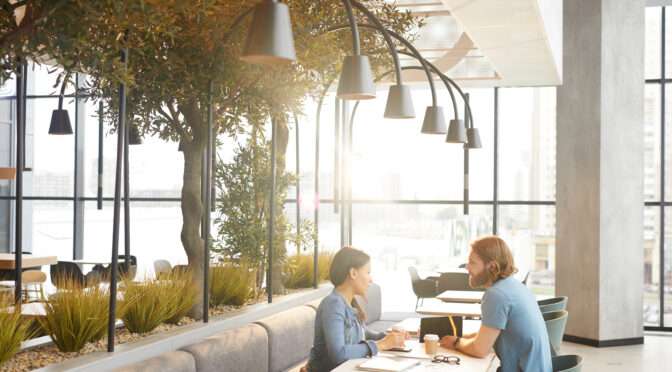In today’s fast-paced, digitally dominated world, we are spending more time indoors than ever before. It’s no surprise that people are looking for ways to reconnect with nature from the comfort of their homes and workplaces. Enter biophilic design—an interior design approach that incorporates natural elements to promote wellbeing, creativity, and calm.
At Oraanj Interiors, we believe biophilic design isn’t just a passing trend—it’s a fundamental shift in how we think about our indoor environments. Rooted in both sustainability and science, biophilic interiors are reshaping homes and workspaces across the UK.
What Is Biophilic Design?
Biophilic design is derived from the term biophilia, meaning “love of nature.” It refers to the concept of designing spaces that enhance our connection to the natural world, using elements such as:
- Natural light
- Indoor plants
- Organic materials (wood, stone, clay)
- Nature-inspired patterns and textures
- Views of green spaces or water
The result? Healthier, more inspiring, and more sustainable interiors.
Why Choose Biophilic Design?
Studies show that environments designed with biophilic principles can lead to:
✅ Reduced stress and anxiety
✅ Improved concentration and productivity
✅ Better air quality
✅ Enhanced creativity
✅ A stronger sense of well-being
Whether you’re designing a city apartment, a countryside retreat, or a home office, biophilic elements can create a sanctuary that nurtures mind and body.
Core Elements
1 . Natural Light and Ventilation
Maximise sunlight by using large windows, glass doors, and open-plan layouts. Natural ventilation not only improves air quality but also helps regulate indoor temperatures more efficiently.
Oraanj Tip: Use sheer curtains or slatted blinds to soften light without blocking it entirely.
2. Indoor Plants and Green Walls
Houseplants are one of the easiest and most effective ways to introduce biophilic design. From simple potted herbs in the kitchen to dramatic living walls, greenery boosts oxygen levels and brings life into any space.
Trending in 2025: Vertical gardens and low-maintenance moss walls are becoming a biophilic staple in modern homes and commercial spaces alike.
3. Natural Materials and Textures
Incorporate materials like wood, stone, bamboo, cork, linen, and rattan. These not only add tactile richness but also evoke a sense of warmth and authenticity.
Design Note: Combine reclaimed wood with polished concrete for an eco-chic contrast.
4. Water Features
Water is a key component of biophilic design. Indoor fountains, fish tanks, or even soundscapes of trickling water can create a calming, meditative environment.
5. Organic Shapes and Patterns
Mimic the irregular shapes and rhythms of nature with curved furniture, leaf-like prints, or flowy architectural features. This reduces the hard, linear feel of traditional interiors.
How Oraanj Interiors Brings Biophilic Design to Life?
Our design team works closely with clients to create interiors that feel fresh, inviting, and deeply connected to the natural world. We offer:
- Bespoke plant styling
- Lighting design that maximises natural exposure
- Eco-conscious material sourcing
- Furniture and layout planning for wellness-focused living
Whether you’re starting from scratch or refreshing an existing space, we can help you incorporate biophilic design principles without sacrificing style or function.
Final Thoughts:
Biophilic design isn’t about filling your home with greenery—it’s about creating a balanced, sustainable lifestyle that enhances your mental and physical wellbeing. As more homeowners across the UK prioritise mindful living, this design philosophy continues to shape the future of interiors.
Looking to design a healthier, nature-inspired home? Contact Oraanj Interiors today and explore how biophilic design can transform your space.



